Kids and their humor
Our time in Ireland was the site of multiple returns, most notably to the place that Karen and I met, but I’ll start this post with a different kind of return. First, meet Steven Seagull:

We met the dreaded Steven during the first week of our trip in Tallin, Estonia. He’s famous there for being really aggressive at going after people’s food. (He has that name because Estonian people have a funny sense of humor.) Unfortunately, during our encounter, it wasn’t our food he went after, but rather Charlie’s finger. Thankfully there was no permanent damage, but he did have a red mark for a few hours. We don’t know what Charlie did to deserve this, but it turns out the seagulls weren’t yet done with him.
<Warning: potty humor section. Skip ahead to the next red text if you’re too fancy for that sort of thing.>
Seagulls can travel very far, but I don’t know if it was Steven exactly who got to us in Dublin, Ireland. More likely he was employing some sort of international seagull communication network, possibly headquartered in Brussels. What we do know is that Charlie was again deliberately and maliciously targeted by the seagull community.

While he was minding his business, simply paying attention to our guide during a walking tour of Dublin, a flock of seagulls bombarded our location and Charlie got poop all over his sholder.
When it rains it pours: immediately afterwards, James informed me that he very urgently needed to go to the bathroom. So, the three of us rushed away from the walking tour to find a bathroom to use and also clean up a poopy hoody. The closest was McDonald’s, but I had to buy some french fries to get the bathroom code, so on the plus side my count for places I’ve eaten McDonald’s in is up to 30 countries now!
We eventually rejoined Karen and Henry as they were finishing the tour at Trinity College, where Karen was secretly hoping they might consider attending someday. Here they are thinking about it:

Anyway, back to poop: As you might guess with three boys (and I’ll admit, me too), potty humor is a favorite in our family. (Karen has learned to live with it.) In addition to my protracted seagull story, Ireland has been a great place in that regard!
As a first illustration, here was an exhibit at the Dublinia Museum, which was focused on the early history of Dublin and its founding as a Viking outpost:

As a second example, here is a caption describing an old woodcut in the Galway City Museum. Pay special attention to the final sentence:
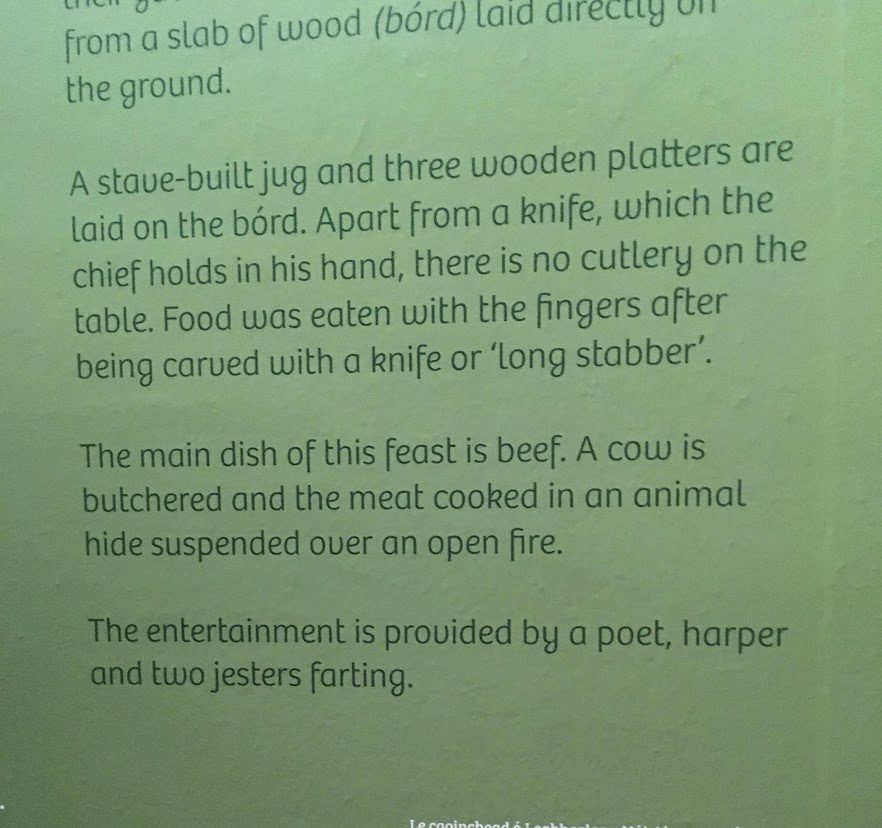
In case you’re a visual learner, here are James and Charlie pointing to the described image:
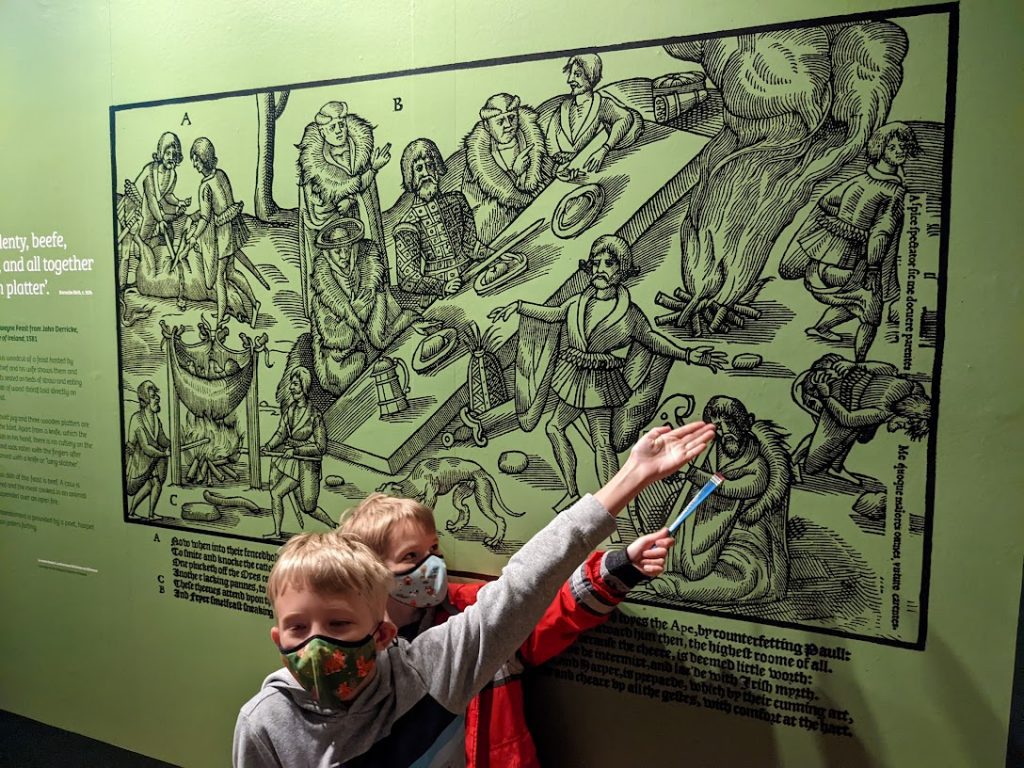
</End of potty humor section. If you skipped past it, you’re no fun.>
Where it all started
Back to the topic of “returns”, Dublin will always be a special place for us because it’s where Karen and I met. I woke up the morning of June 3, 1999 and saw her in the bed next to mine on the top bunk in a room at the Avalon House Youth Hostel. This time around, we tried to stay there again, but unfortunately it closed a couple years ago. Instead, we took a picture from the front door.
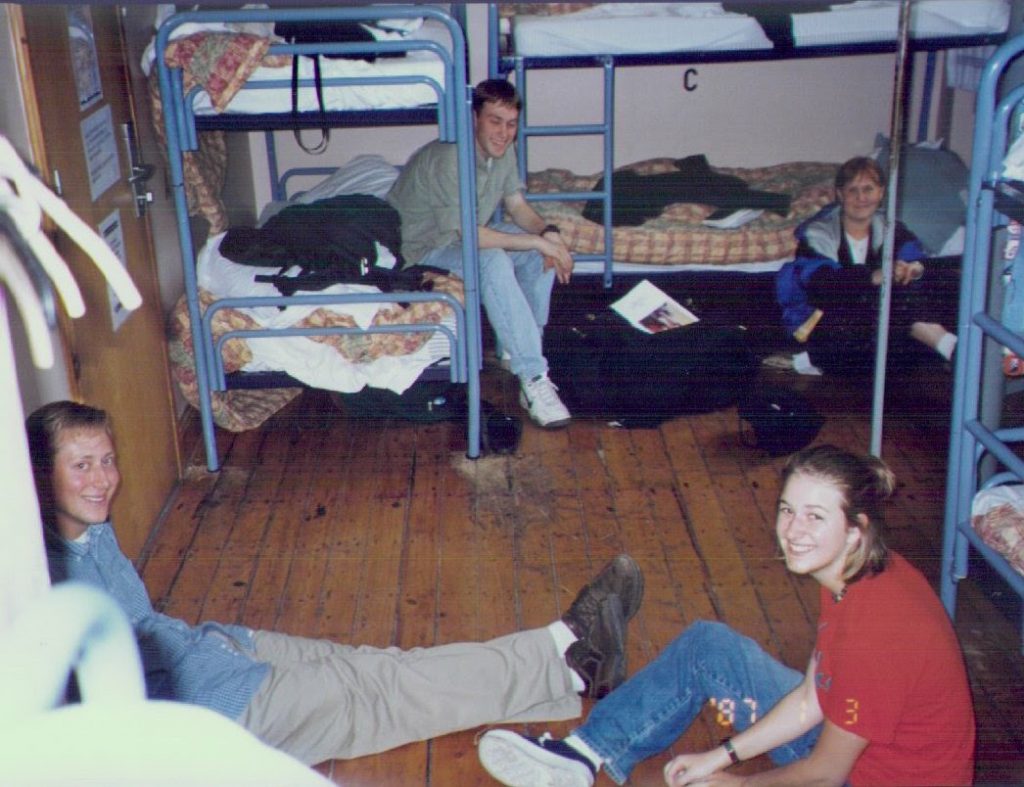
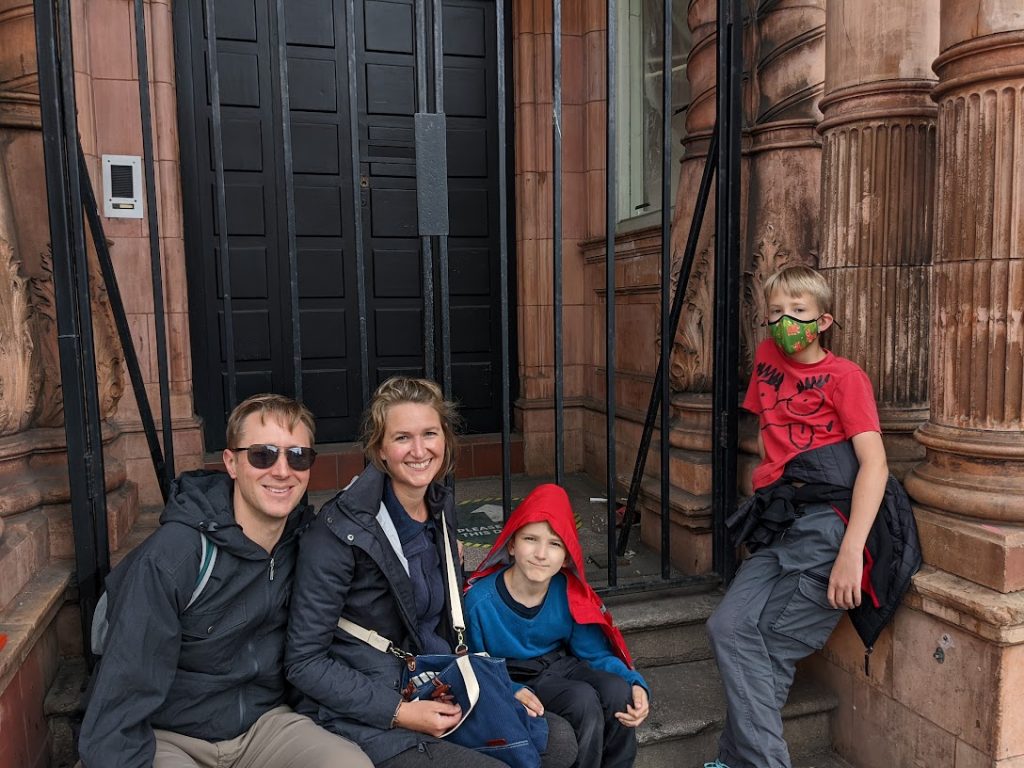
After that, we went to the Bad Ass Cafe, where Karen and I had lunch the day we met. It was famous at the time because Sinead O’Connor had worked there as a waitress. This time, there was still a tiny little plaque on the stairwell of the renamed Bad Ass Bar commemorating this fact, but otherwise it was completely changed. At some point, they’d changed the decor to make it look like a “traditional” Irish bar to appeal to tourists and the menu became more touristy as well. It was almost a total disappointment, but the waiter really loved our story of having eaten there the day we met and brought out three free enormous dishes of ice cream for the boys.

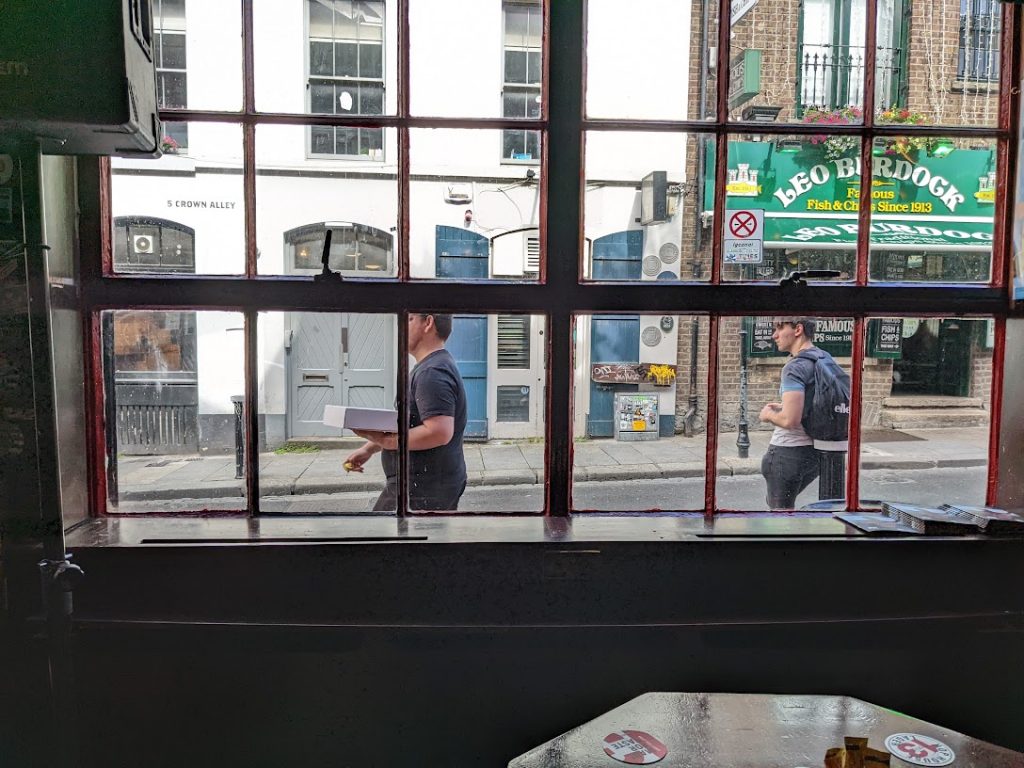
To complete our (generally very boring for the kids) trip down memory lane, we also visited Christchurch Cathedral, where we once ate fish & chips on the benches outside. Our kids don’t really like fish & chips, so we just took a picture.
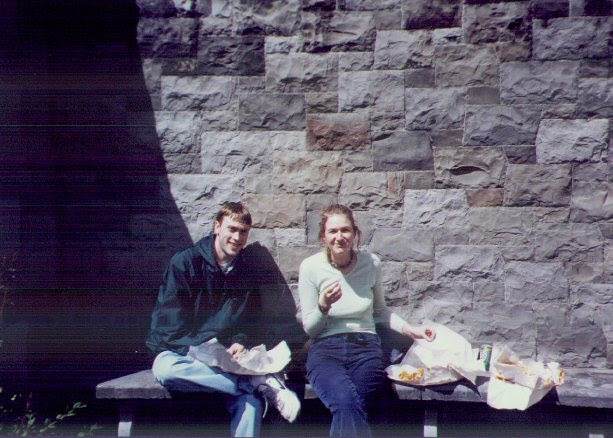
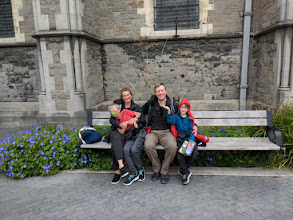
Besides our tourism and reminiscing stops in Dublin, we also took the train to Galway in the west and stayed there for a few days. Karen and I had a couple of nice parent-only dinners there, but the highlight for everyone was probably the Aran Islands/Cliffs of Moher bus/ferry trip we took on our last day. It rained most of the time and ended up being a pretty long day, but we saw some beautiful sites. Here are a few of the pictures I took during the trip.
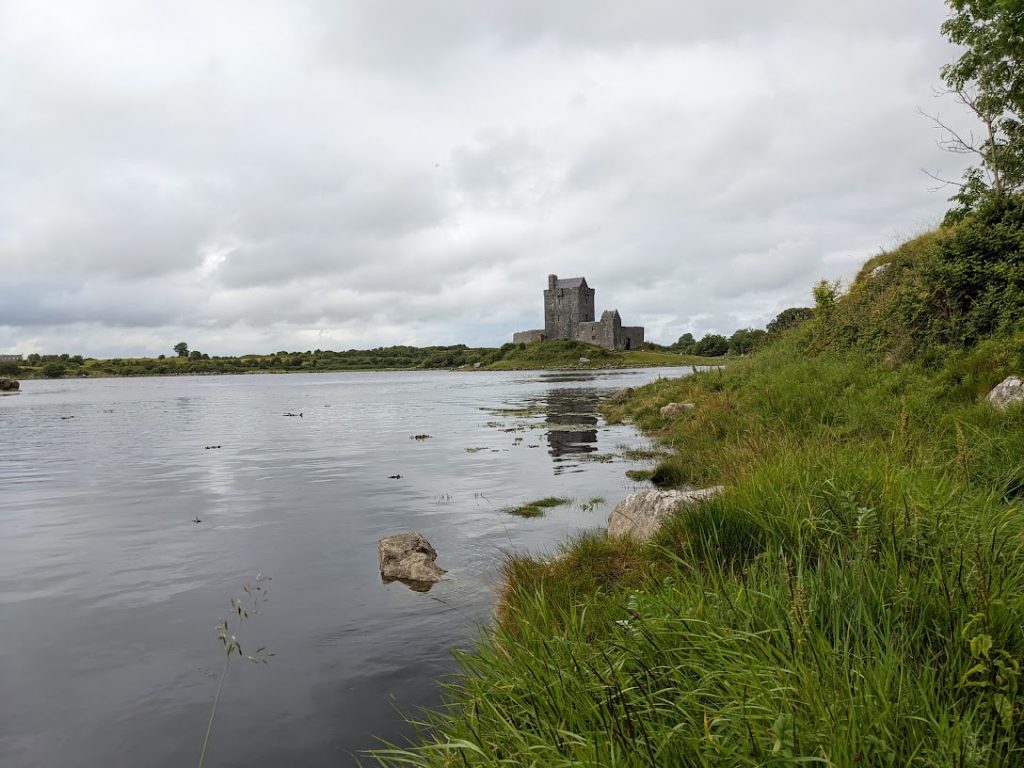
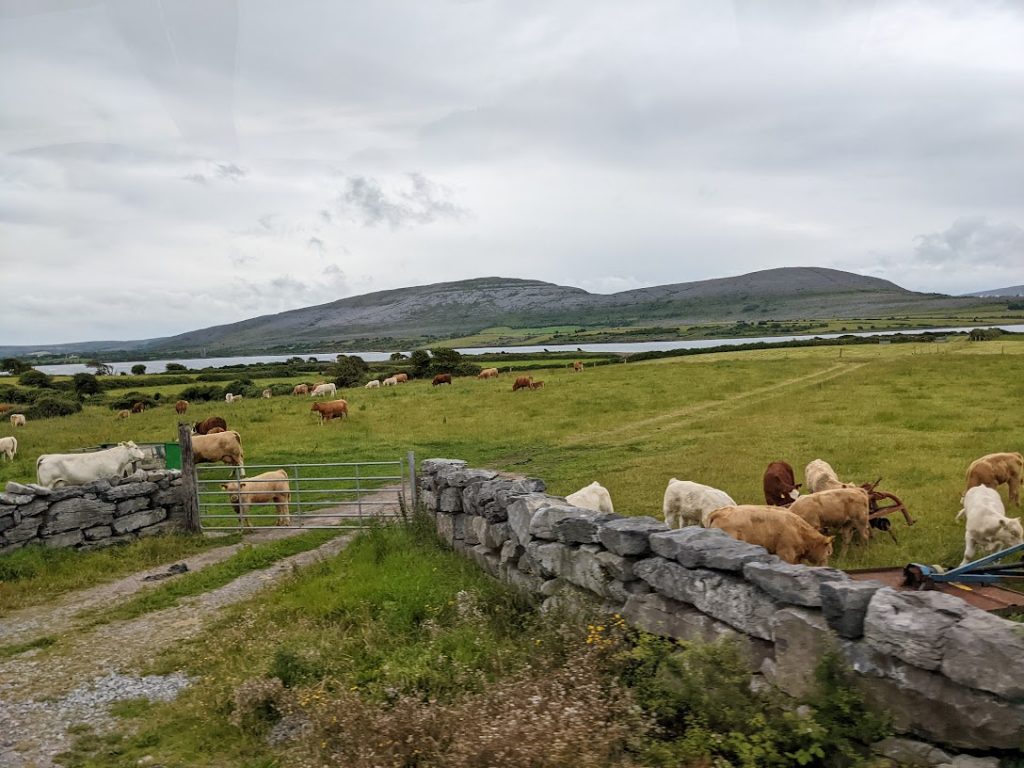


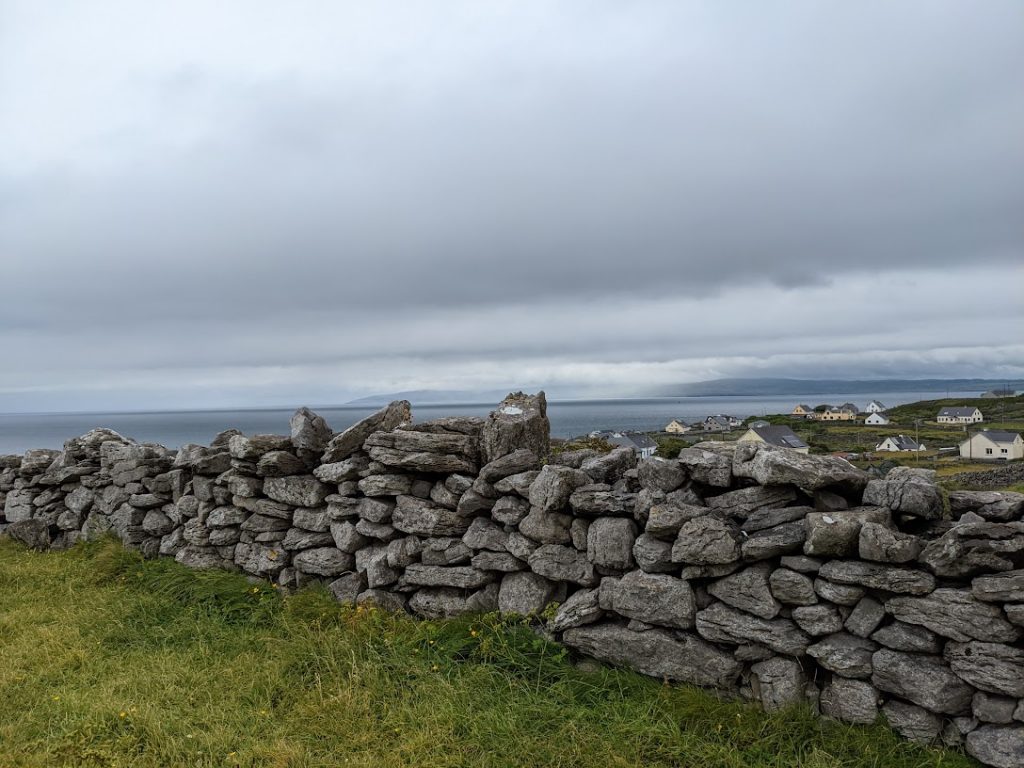
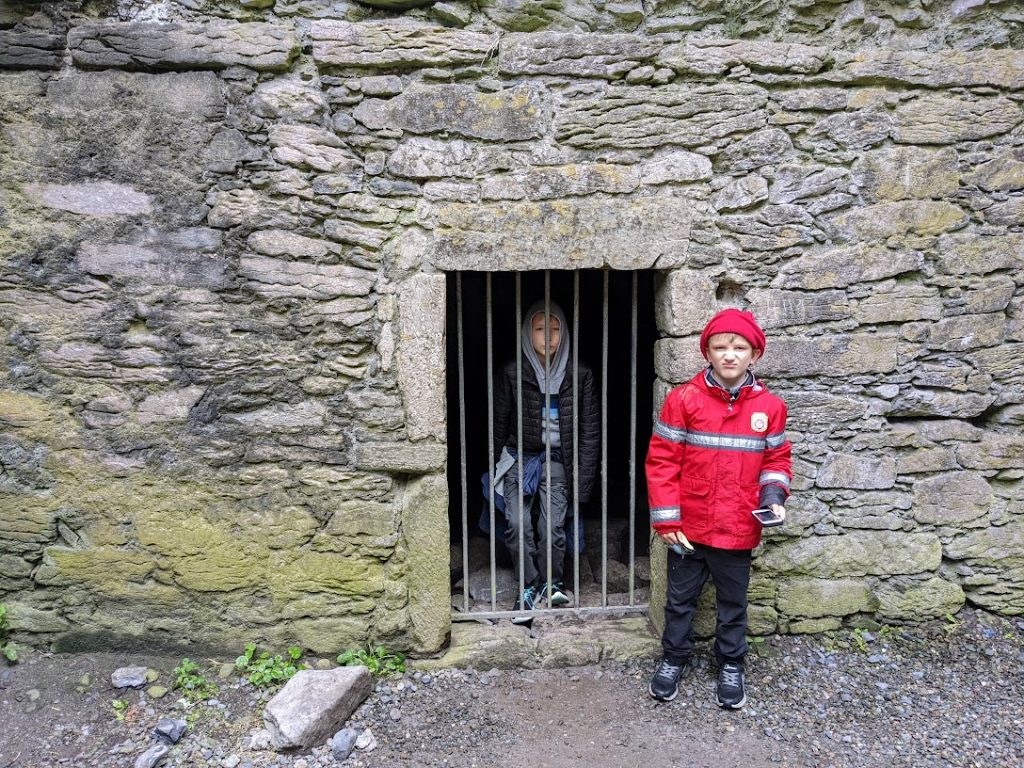
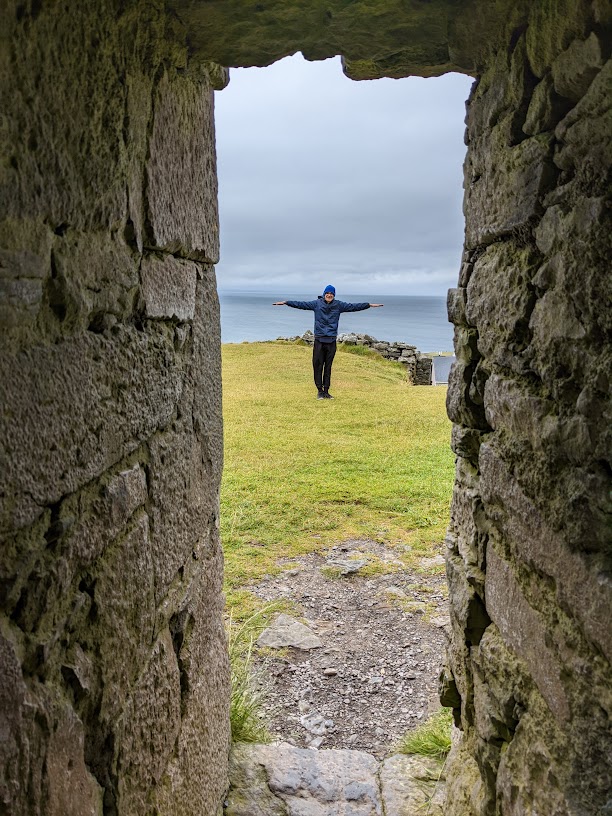
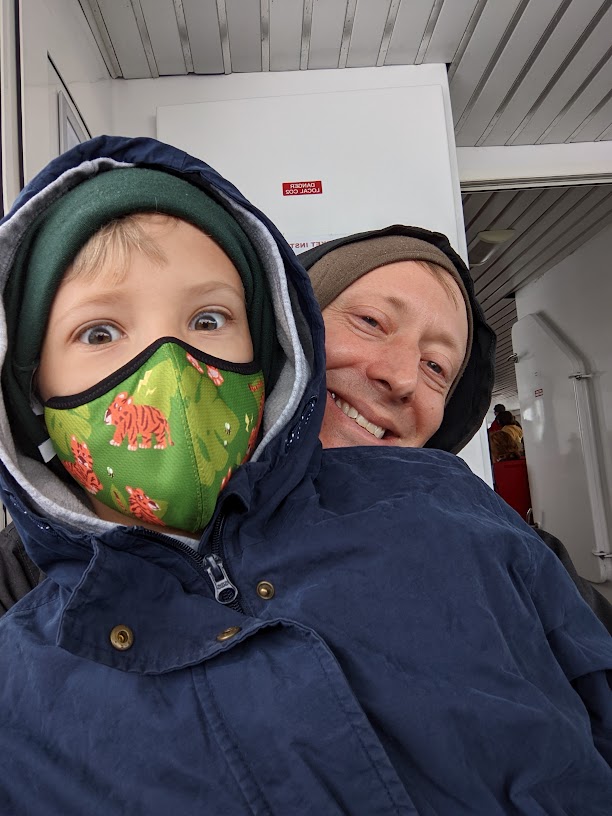
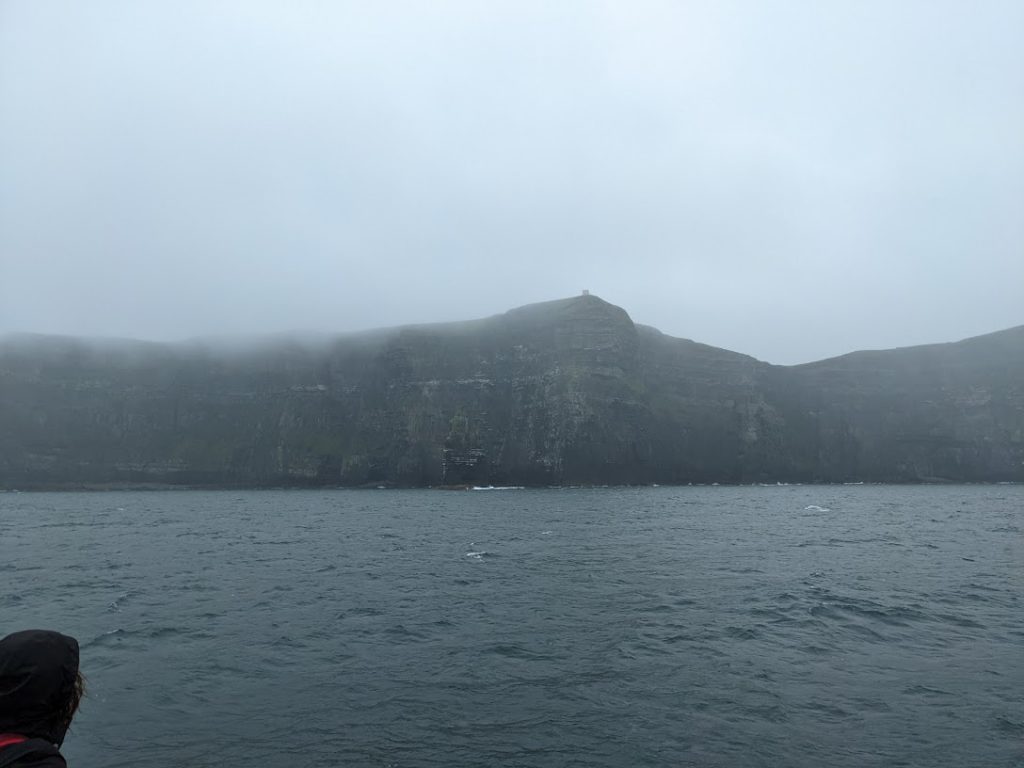
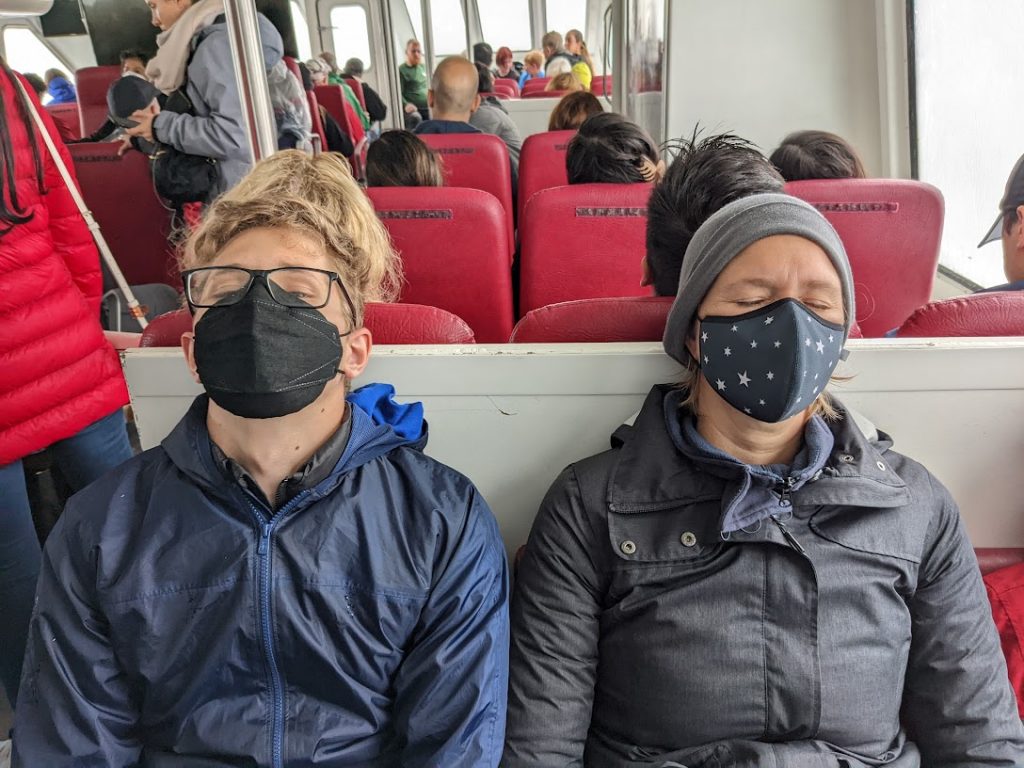
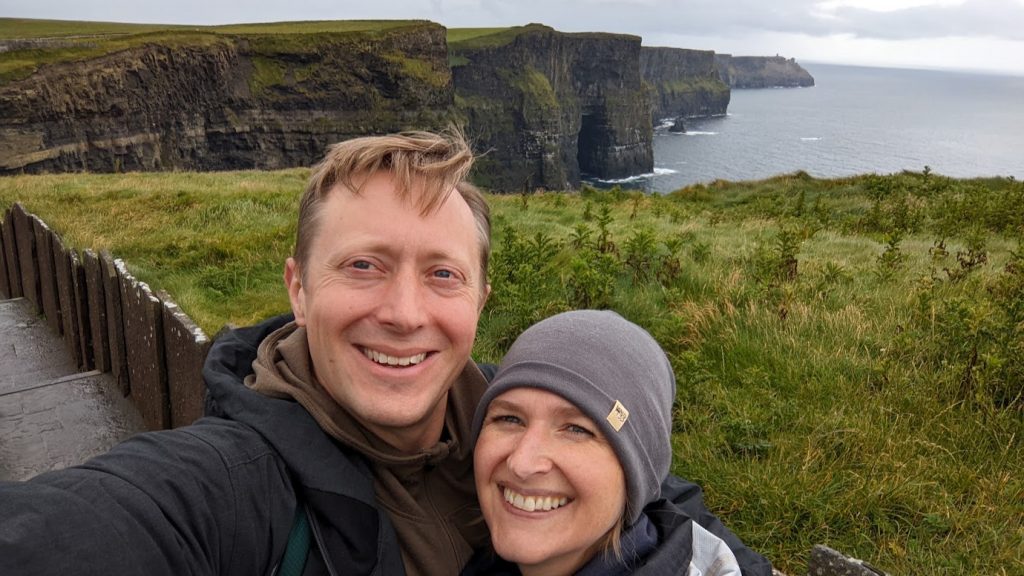
Suprisingly good time in Belfast
After Galway, we had a longer travel day: back to Dublin before catching another train to Belfast in Northern Ireland (which is technically in the United Kingdom and another country, but I’m putting it here in my Ireland post!) Besides the length of time spent traveling, it was frustrating for the boys because we’re trying to do as much of their schooling as possible on trains and we’re quickly learning that train wifi isn’t as reliable as we’d like. Here they are trying to work hard.
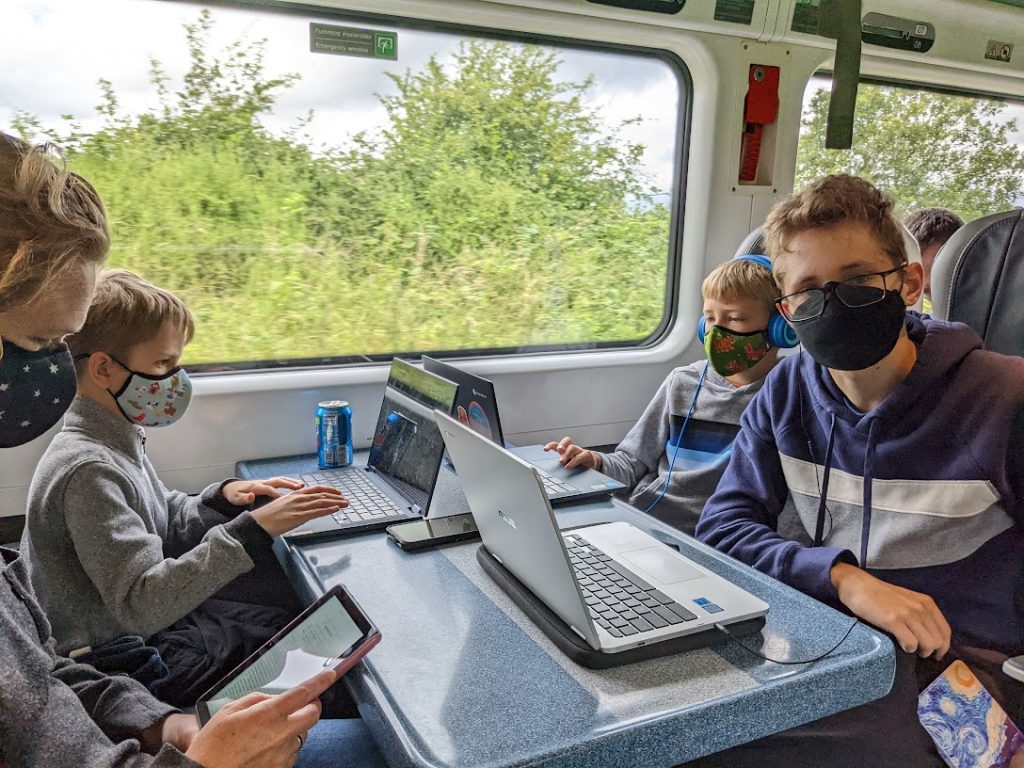
So as we arrived in Belfast in the late afternoon, no one was particularly happy and I wasn’t expecting too much. I wasn’t impressed with Belfast during the same trip 23 years ago when I met Karen. In retrospect, I’m thankful for that, because Paul and I left earlier than we were originally planning and the timing was right for me to end up with an awesome wife out of the change. That’s why, though, I was pleasantly surprised that we had such a great time in our couple days this time around.
First off, we put our train problems behind us when we found an excellent Nepali/Indian restaurant and had a great meal:
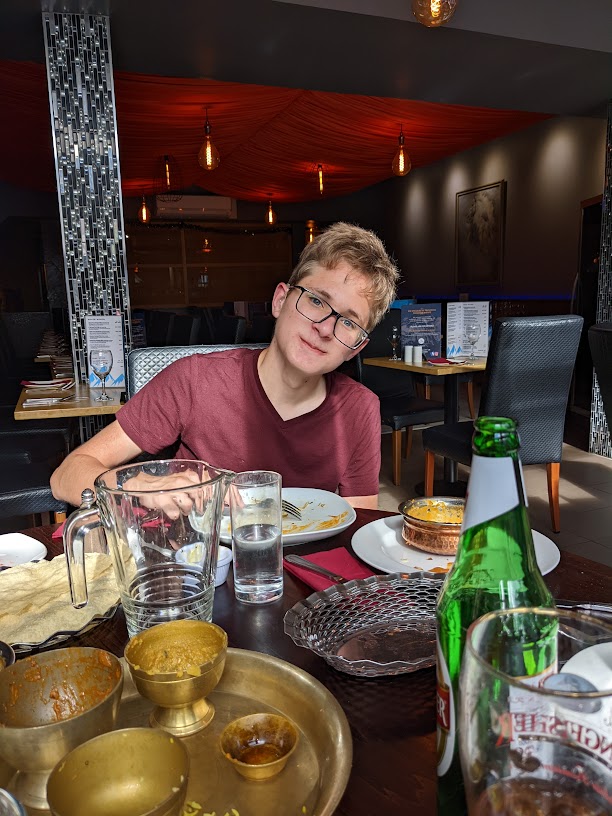
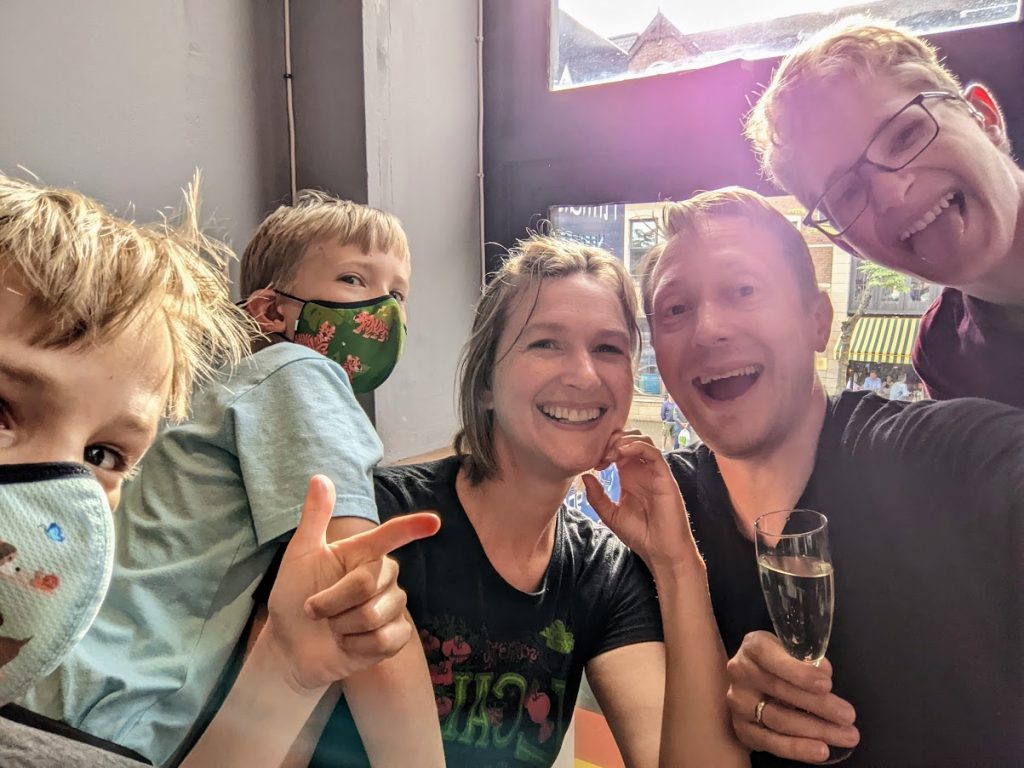
After that, Karen and I took a stroll around town while the boys relaxed in the room at our cool hostel. The next morning, I had a great run before everyone else woke up and then we went to the excellent Ulster Museum, which had a range of exhibits ranging from ancient Irish history to local Belfast history to an interactive science center for kids.
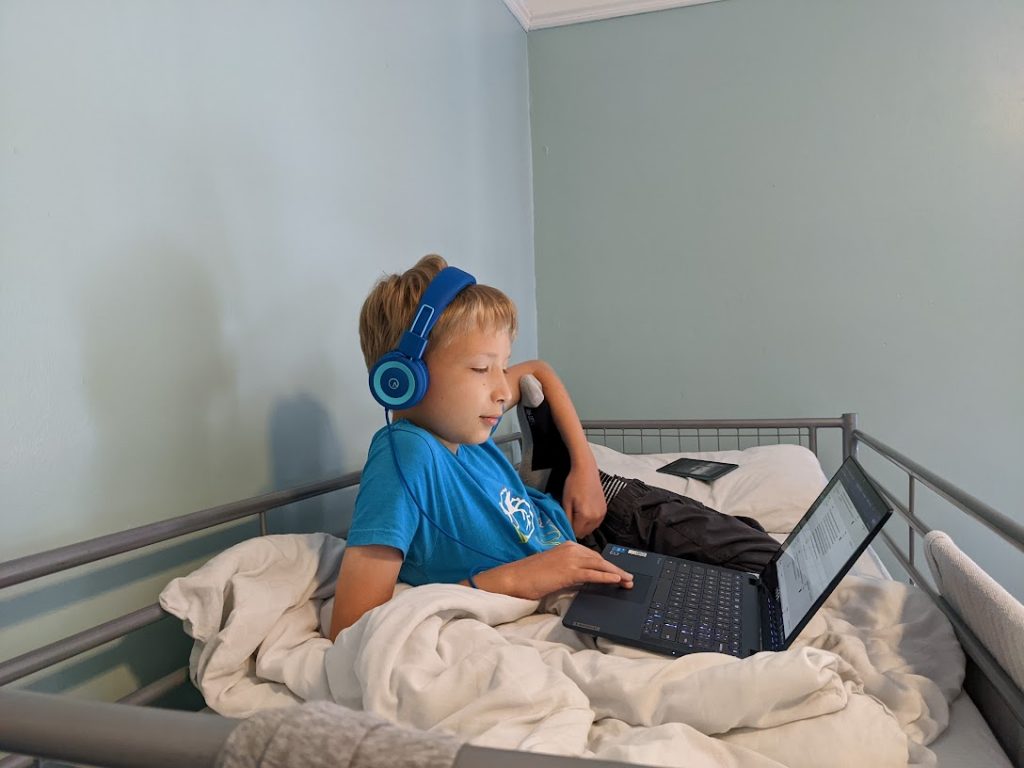
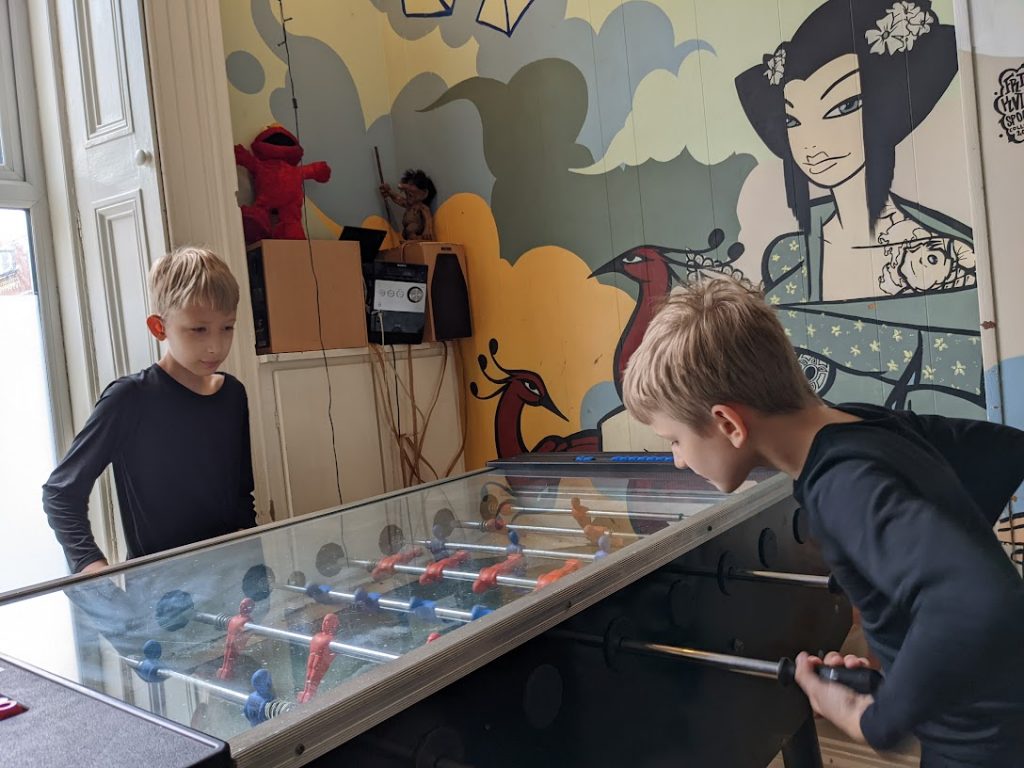
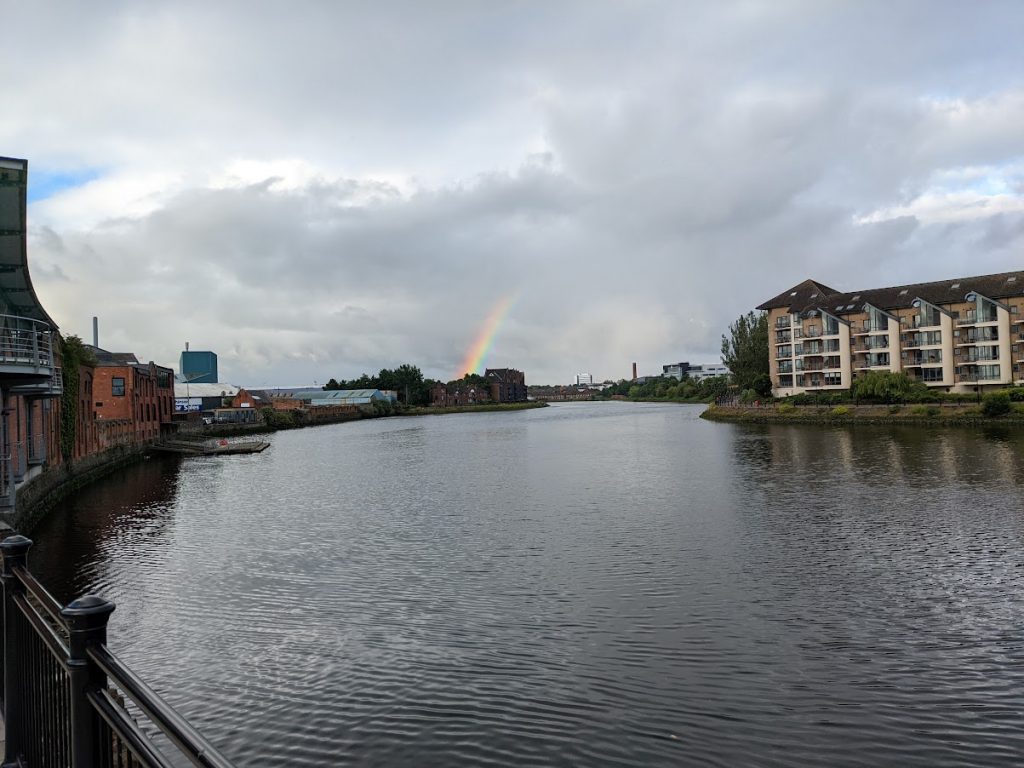

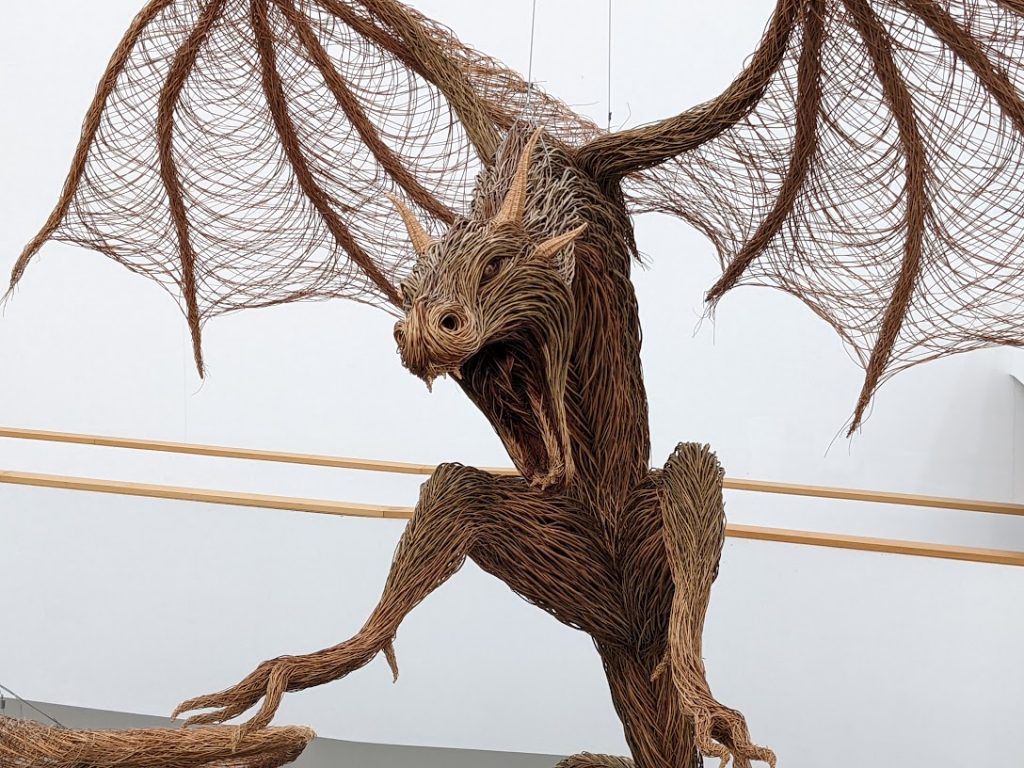
The Troubles
The highlight for me and Karen, though, was a three hour “Conflicting Stories” walking tour we took about “The Troubles” between the Catholic/Republican community (who want the north to be part of the Republic of Ireland with the rest of the island) and the Protestant/Unionist community (who want the north to remain part of the United Kingdom) in West Belfast. The tour, like West Belfast with a 26km-long fence, was split into two halves. The first half was with a Republican member of the Provisional IRA who had been released from prison after the Good Friday Agreement in 1998. The second was with a Unionist former officer in the British Army and security services whose father and brother had both been killed by the Provisional IRA. Both told their stories and encouraged us to listen with an open mind. (The conflict and The Troubles were an issue outside of West Belfast, having an impact including thousands of deaths across Northern Ireland, the rest of the UK and elsewhere, but this tour focused mostly on West Belfast.)
One thing that stood out to me was that in this very identity-driven conflict, both sides seemed to be more aligned to aspects of that identity than the broader group they were affiliating with. As an illustration, here is a train sign in Dublin, the capital city that our Catholic/Republican guide wants for his home:

One thing you notice quickly while visiting the Republic of Ireland is that written and spoken Irish is the first language on any official government communication–train signs like this, announcements on buses, etc. All students across the country are required to learn it in school from a very young age. And yet, it is the first and primary language of only a very small minority of people (mostly in smaller communities in the west), and almost everyone we spoke with was at best indifferent about the language. Many mentioned their schoolhood struggles being forced to study it and were quite happy to avoid it as adults.
Contrastingly, our guide was extremely focused on his “Irishness”, a central part of which was the use of the Irish language, which he demonstrated by the way he greeted anyone he saw in the community and by a story he told about being proud that his granddaughter was doing poorly in her English studies in school. When I asked him about what he thought of the future of the language, he acknowledged that he didn’t think it would ever be the main language for most people in Ireland, but appreciated that it was recognized in the 1998 agreement.
Similarly, our Protestant/Unionist guide shared with us that first and foremost the people of his community saw themselves as proud citizens of the United Kingdom. To illustrate this, here’s a picture of Shankill Road, one of the main roads in the Protestant/Unionist community:
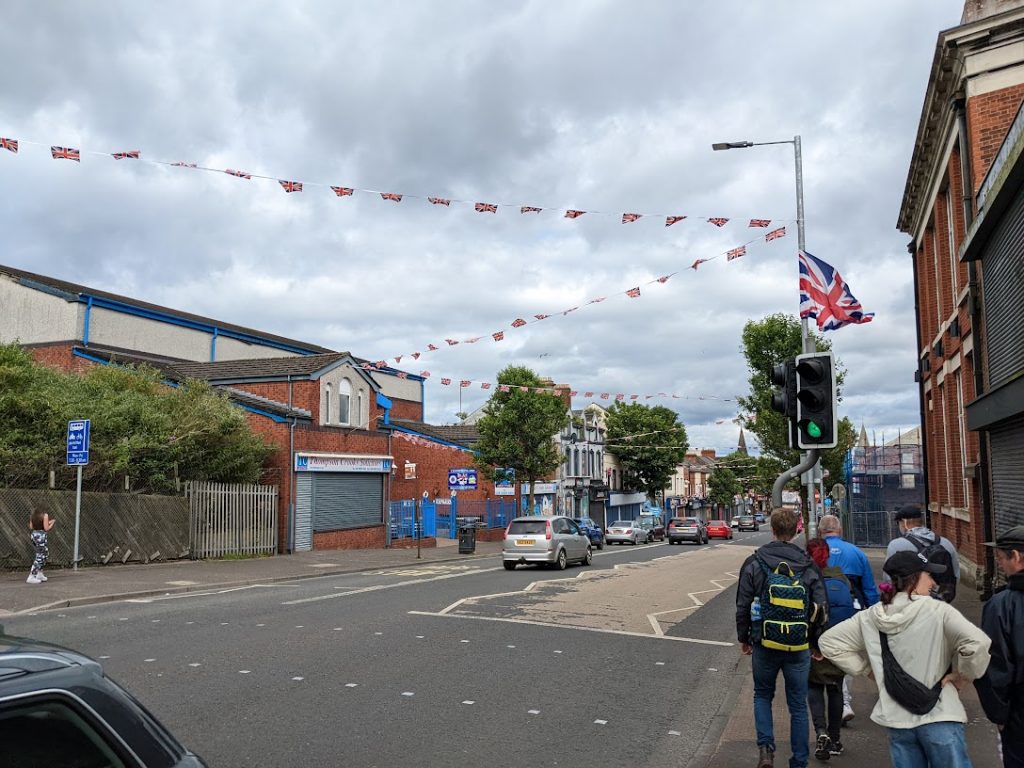
Both guides emphasized that even though these two communities live side-by-side, they share very few cultural practices, with no Protestants on the Republican side and no Catholics living on the Unionist side. In both communities, it’s almost taboo to have any kind of relationship at all with people from the other side. This wall (“Peace Line”), which is 42 feet high in some places, helps maintain that divide and also prevents the throwing of rocks and worse things like grenades, from one side to the other. It has 6 gates which all close at 7pm every night:


Our Republican guide continued to maintain that while there is currently peace, he is very actively invested in a hope that the entire island will eventually be a single country. (His preference is peaceful, but didn’t rule out other means.) Besides the political/cultural divide, one of the main reasons he gave for the cause he supported was the economic segregation that characterized much of British rule of Northern Ireland, which he compared to South African apartheid, with the vast majority of economic opportunity going to Protestants. (The examples here were primarily historical, but he suggested that this remains a problem.)
He was excited about the fact that Sinn Féin, the political arm of the IRA, for the first time received the most votes in Northern Ireland’s recent parliamentary elections and hoped that this, along with some of the border changes caused by Brexit, would help lead to a unified Ireland. (Although they won the election, they are still working on trying to form a government, which might or might not happen.)
Conversely, our Unionist guide struck a mostly a pessimistic tone, saying he thought it would be 3-4 generations until both sides could learn to live together again. His tour focused heavily on the lives and stories of many innocent people whose lives were taken by indiscriminant IRA bombings. Many, many people lost family and loved ones to the violence that characterized The Troubles, but one thing that gives me hope is the fact that likely very few lost as much as him, with both his father and brother being innocent victims. (He said his father was killed for being a Protestant electrician working in homes in a Catholic community.)
As you might expect, the recent events that excited our Republican guide made the Unionist very unhappy, especially the election of IRA members to parliament. He told us specifically and directly that several of those politicians were exactly the same people who had killed people with bombings and that this would obviously be too much to take. We found out later that this wasn’t really true; he was talking about the organization as a whole being involved in bombings–none of the actual politicians seem to be the ones who committed the violence. He did say, however, that there was no way most people in his community would be able to accept being governed by IRA members and that the peace agreement would probably fail if the newly elected parliamentarians were able to build a coalition to govern.
I’m hoping Northern Ireland continues to have peace, but left the tour very concerned about those prospects and hopeful for further breakthroughs. (My hope is that the resignation this week of Boris Johnson as the UK Prime Minister might make this more possible, but I think no one really knows.) I hope as well that my writeup was clear enough to share something useful with you, since I’m by no means an expert!
The day after our tour, we said goodbye to the island and caught a ferry and then bus onwards to Glasgow, Scotland. With Ireland and the UK (which I’ll count here), our family country count is as follows:
- Me: 57 countries (including 30 eating McDonalds–yay for bathroom stops!)
- Karen: 55 countries
- Henry: 21 countries (he and Charlie both spent a day in London in 2012)
- Charlie: 15 countries
- James: 12 countries